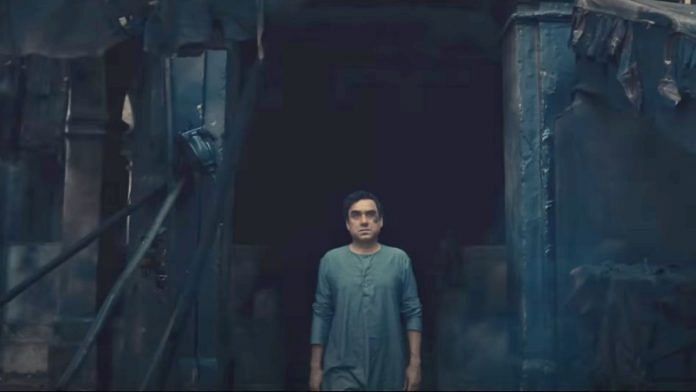In Main Atal Hoon, a biopic memorialising Atal Bihari Vajpayee, the late Prime Minister is not always the arbiter of the nation’s fate, but sometimes a reluctant witness to bloodshed that invariably creeps up.
After receiving only two seats in the 1984 elections, despondency enters the ranks of the then-newly-minted BJP. According to Ram Jadhav directional, the party is revived by the Ram Janmabhoomi Movement. It’s an instinct that has lain dormant, one they are entitled to. It’s a Hindu party capitalising on popular Hindu sentiment.
The Ram Rath Yatra kicks off, and while Vajpayee (played by Pankaj Tripathi) isn’t depicted as an active participant, he’s a staunch supporter, cheering from the sidelines. He is in a hospital, studying the dead bodies and injured faces—and it hits him. The VP Singh government must fall.
A blot on India’s history
The initial stages of the yatra are presented with fanfare in the film, a coming of age for the BJP, a stroke of political genius. But then, when it culminates in the demolition of the Babri Masjid, Vajpayee is first appalled, and eventually defeated. This isn’t why he joined politics, he never wanted people to die. “Jo kuch bhi hua, accha nahi hua [whatever happened, wasn’t good],” he says.
Rumours swirl—he is going to abandon the party and leave politics for good. In a meeting, visibly concerned leaders tell former Minister of Home Affairs LK Advani to convince Vajpayee, to wrest him out of his disillusionment.
Also read: Netflix chose fear over fact. Removing ‘Annapoorani’ only feeds the bully
While the Ram Janmabhoomi Movement is treated as a celebration, the demolition of Babri Mosque is not. It’s only represented through archival footage, that of kar sevaks standing on top of the mosque. Death and destruction are shown, and though it isn’t specified that Muslims were on the receiving end of it, the imputation is strong.
The demolition is shown as a blot on India’s history, a page that should not be there. The fact that the movie makers chose to show it, but not recreate it is part of a steadily shrinking sentiment—it happened, it wasn’t a rite of passage, and it wasn’t well-deserved comeuppance.
Advani isn’t portrayed as orchestrating the demolition; instead, he and Vajpayee are depicted as friends and allies. But the latter isn’t pleased when Advani announces him as the BJP’s prime ministerial candidate, that too without bothering to inform him.
In the film, young Vajpayee is in awe of the Rashtriya Swayamsevak Sangh (RSS): the Sangh gives his personal and political life structure. He makes sense of India and the world through the purview of the Sangh. But while anti-Muslim ideology is no longer given a second glance, Vajpayee’s on-screen representation often makes moves that could, in today’s day and age of low standards, be described as syncretic.
He invites former President of India APJ Abdul Kalam to do a pooja on Budh Purnima, and expresses shock at the killing of MK Gandhi, and his journey to Lahore via bus to meet former Prime Minister of Pakistan Nawaz Sharif is also treated by the filmmakers as a step forward—an advancement in favour of ‘Bharat’s’ becoming.
The pran pratishtha ceremony in Ayodhya on 22 January is almost upon us. In many ways, the consecration is an open-armed embrace of our collective act of forgetting. Main Atal Hoon is an accidental remembrance.
Views are personal.
(Edited by Ratan Priya)



